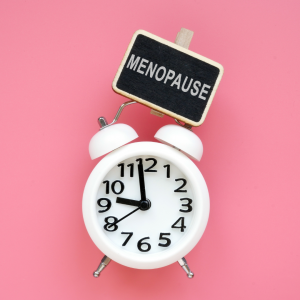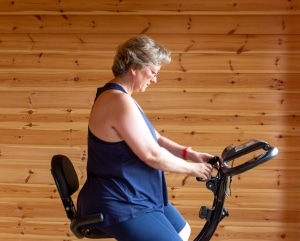 Strategies for Resilient Teams
Strategies for Resilient Teams
In today’s fast-paced UK business landscape, managing negative emotions in the workplace has become a critical challenge for leaders. The Gallup Global Emotions 2024 report sheds light on the prevalence of negative experiences worldwide. But how does this translate to the UK context, and more importantly, how can we as leaders address these challenges to create more resilient and productive teams?
The UK Emotional Landscape: A Sobering Reality
Before we dive into solutions, let’s consider the current emotional state in UK workplaces:
- 79% of British adults experience work-related stress (Mental Health UK, 2023)
- 1 in 6 UK workers experience mental health problems like anxiety and depression (Mind)
- Stress, depression, and anxiety accounted for 55% of all working days lost due to work-related ill health in 2021/22 (HSE)
These statistics underscore the urgent need for UK businesses to address negative emotions head-on.
5 Powerful Strategies to Manage Negative Emotions in UK Workplaces
Implement a Comprehensive Mental Health Programme
Global insight: Countries with strong mental health support systems report lower levels of negative emotions at work.
UK Application:
- Partner with mental health charities like Mind or Samaritans
- Offer confidential counselling services through an Employee Assistance Programme (EAP)
- Train managers in Mental Health First Aid
Action step: Launch a ‘Wellbeing Wednesday’ initiative with weekly mental health tips and resources.
Foster Open Communication About Emotions
Global insight: Workplaces that encourage emotional expression report lower levels of negative emotions overall.
UK Application:
- Implement regular ’emotion check-ins’ during team meetings
- Create safe spaces for employees to discuss their feelings
- Train leaders in emotional intelligence and empathetic communication
Action step: Start a ‘Feelings Friday’ where team members can share their emotional highs and lows of the week.
Address Work-Related Stressors
Global insight: Organisations that actively tackle workplace stressors see a reduction in negative emotions.
UK Application:
- Conduct regular workload assessments to prevent burnout
- Offer flexible working arrangements to improve work-life balance
- Provide training on time management and prioritisation skills
Action step: Implement a ‘Stress Busters’ programme where employees share their best stress management techniques.
 Promote Physical Wellbeing
Promote Physical Wellbeing
Global insight: Countries with higher levels of physical activity report lower levels of negative emotions at work.
UK Application:
- Offer gym membership subsidies or on-site fitness classes
- Encourage ‘walking meetings’ for one-to-ones
- Provide healthy snacks and promote regular break times
Action step: Launch a company-wide step challenge to encourage daily physical activity.
Build Team Resilience
Global insight: Teams trained in resilience report lower levels of negative emotions during challenging times.
UK Application:
- Offer resilience training workshops
- Implement a peer support system for challenging projects
- Celebrate ‘lessons learned’ from setbacks to foster a growth mindset
Action step: Create a ‘Resilience Toolkit’ with resources and techniques for managing difficult emotions and situations.
Measuring the Impact of Emotional Management Initiatives
To ensure your strategies are effective:
- Conduct regular employee mood surveys
- Monitor changes in absenteeism and presenteeism rates
- Track usage of mental health resources and EAP services
- Measure productivity alongside emotional wellbeing metrics
The Business Case for Managing Negative Emotions
Addressing negative emotions isn’t just about employee wellbeing—it’s a smart business move:
- UK businesses lose £45 billion annually due to mental health-related absences (Deloitte)
- Companies with high levels of mental wellbeing report 31% higher productivity (Oxford University)
- 85% of UK workers believe employers are responsible for supporting their mental health (AXA)
Imagine a workplace where:
- Employees feel comfortable expressing and managing their emotions
- Teams bounce back quickly from setbacks and challenges
- Your company becomes known as a supportive employer, attracting top talent
- Productivity and innovation thrive in an emotionally intelligent environment
This isn’t a pipe dream. It’s the reality for UK companies that prioritise emotional wellbeing and resilience.
 Your Next Steps: Leading with Emotional Intelligence
Your Next Steps: Leading with Emotional Intelligence
Ready to transform your workplace into an emotionally resilient, high-performing environment? Start with these actions:
- Conduct an ’emotional temperature check’ of your current workplace culture
- Survey your team about their emotional challenges at work and desired support
- Implement one new strategy from this article to address negative emotions
- Share your commitment to emotional wellbeing with your team and invite their input
Remember, managing negative emotions in the workplace isn’t about suppressing feelings or maintaining a false sense of positivity. It’s about creating a culture where all emotions are acknowledged, understood, and effectively managed.
Are you ready to lead with emotional intelligence and unlock your team’s full potential? Your business’s success—and your employees’ wellbeing—may depend on it.
Whether you’re looking to pivot your business model, upskill your workforce, or reinvent your personal brand, we provide the expertise and support to turn your vision into reality. Let’s collaborate to unlock your potential and create a future-ready version of your business or career.
Enjoyed this blog? Check out my other blogs on various resilience and leadership topics here.

 A UK Leader’s Guide
A UK Leader’s Guide
 Provide Context and Perspective
Provide Context and Perspective
 A Critical Challenge for UK Business Leaders
A Critical Challenge for UK Business Leaders
 Leverage Technology to Connect
Leverage Technology to Connect Your Next Steps: Leading the Connection Revolution
Your Next Steps: Leading the Connection Revolution


 For health management, it is important to understand the physical responses triggered by the body when subjected to stressors. Notably, the release of hormones, namely adrenaline and cortisol, is a fundamental element of the stress response. This response mobilises energy by increasing blood glucose levels, preparing the individual for a fight-or-flight situation.
For health management, it is important to understand the physical responses triggered by the body when subjected to stressors. Notably, the release of hormones, namely adrenaline and cortisol, is a fundamental element of the stress response. This response mobilises energy by increasing blood glucose levels, preparing the individual for a fight-or-flight situation. digestive processes. Persistent stressors can precipitate gut disorders, including constipation, diarrhoea, and indigestion. Prolonged exposure to chronic stress carries the potential to instigate severe gut conditions, such as irritable bowel syndrome and other related disorders. This underscores the intricate relationship between stress, cortisol, and the multifaceted nature of gut health.
digestive processes. Persistent stressors can precipitate gut disorders, including constipation, diarrhoea, and indigestion. Prolonged exposure to chronic stress carries the potential to instigate severe gut conditions, such as irritable bowel syndrome and other related disorders. This underscores the intricate relationship between stress, cortisol, and the multifaceted nature of gut health. Wellbeing: Whose responsibility is it?
Wellbeing: Whose responsibility is it?
 Metrics That Matter
Metrics That Matter Well-being is the feeling of being well and being able to take life in your stride. Gallup encapsulated the breakdown of wellbeing in their book “Wellbeing at Work”, breaking it down into 5 key aspects of wellbeing, that I believe, describe the different elements exceptionally well:
Well-being is the feeling of being well and being able to take life in your stride. Gallup encapsulated the breakdown of wellbeing in their book “Wellbeing at Work”, breaking it down into 5 key aspects of wellbeing, that I believe, describe the different elements exceptionally well:
 10 Key tips to Incorporating Well-being into your organisation
10 Key tips to Incorporating Well-being into your organisation When I took up the piano, little did I know the wonderful side effects! It is a great way to improve brain resilience! To keep our brains resilient we need to take care of our brain’s cognitive and emotional health. Keep your brain healthy by stimulating it with activities that challenge it.
When I took up the piano, little did I know the wonderful side effects! It is a great way to improve brain resilience! To keep our brains resilient we need to take care of our brain’s cognitive and emotional health. Keep your brain healthy by stimulating it with activities that challenge it. Whether it’s a new language, history, or science topic, keeping your brain active can help you retain information.
Whether it’s a new language, history, or science topic, keeping your brain active can help you retain information. It is a long-established fact that exercise is good for our bodies but what about brain resilience? The evidence is very clear – leading a physically active lifestyle provides benefits for overall health and wellbeing. Studies have repeatedly shown that people who are physically active throughout their lives have a lower-than-average risk of a decline in thinking skills with aging.
It is a long-established fact that exercise is good for our bodies but what about brain resilience? The evidence is very clear – leading a physically active lifestyle provides benefits for overall health and wellbeing. Studies have repeatedly shown that people who are physically active throughout their lives have a lower-than-average risk of a decline in thinking skills with aging. Classes aren’t just a way to pass the time – they can actually help keep your brain active and sharp. If you’re interested in a new hobby or want to improve your job performance, taking classes is a great way to learn new things and keep your mind fresh. With so many options available, you’re sure to find a class that’s perfect for you.
Classes aren’t just a way to pass the time – they can actually help keep your brain active and sharp. If you’re interested in a new hobby or want to improve your job performance, taking classes is a great way to learn new things and keep your mind fresh. With so many options available, you’re sure to find a class that’s perfect for you. Why are we talking about menopause
Why are we talking about menopause
 What is a curveball?
What is a curveball? What is High-Intensity Interval Training – HIIT
What is High-Intensity Interval Training – HIIT